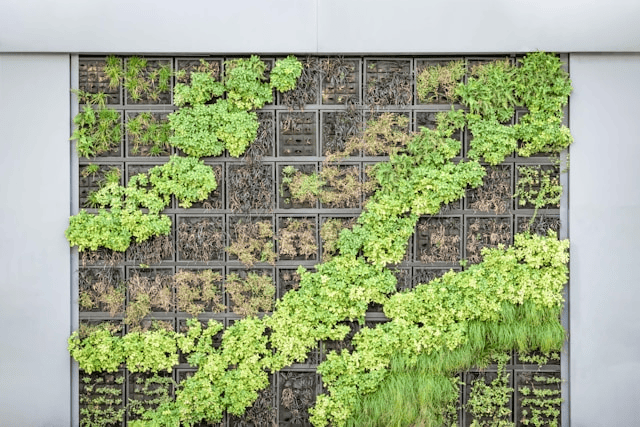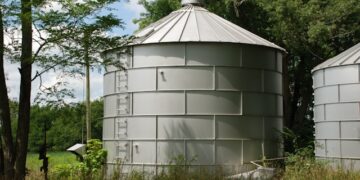Gardening doesn’t require a big backyard or acres of land. In fact, with a little creativity and the right approach, you can turn even the smallest patio, balcony, or wall into a lush oasis. One of the best ways to maximize space and bring a little green into your life this season is to build a vertical garden. It’s an ideal solution for summer, especially if you’re living in an apartment or have a small outdoor area.
Whether you want to grow herbs for cooking, flowers for beauty, or veggies for your meals, a vertical garden DIY project can completely transform your space.
Why Vertical Gardening is Ideal for Summer
Summer offers the perfect conditions for starting a small space garden. The warm temperatures, long days, and frequent sunshine help plants grow quickly and thrive. Vertical gardens, with their upright structure, get more light exposure, making them especially effective during the sunny months.
In addition, summer is a great time to take on outdoor projects. Building a vertical herb garden or a wall of leafy greens is not only rewarding, but it’s also an enjoyable way to spend time outside while staying productive.
Choosing the Right Spot
Before you get started, it’s important to assess your space carefully. When building a vertical garden for small summer spaces, consider the following:
-
Sunlight: Most herbs and vegetables need at least 6 hours of direct sunlight per day. South- or west-facing walls usually work best.
-
Wind exposure: High winds can dry out plants or even knock over lightweight structures. If you’re on a balcony, try placing the garden near a railing or sheltered corner.
-
Indoor vs. outdoor: If you don’t have outdoor access, you can still create a vertical herb garden indoors. Just make sure you choose a spot with good natural light or invest in grow lights.
Materials and Tools You’ll Need
Creating a DIY vertical garden doesn’t require fancy tools. Here’s a list of basic materials to help you get started:
Essentials:
-
Vertical support structure (wooden pallet, trellis, ladder, or hanging rack)
-
Planters or pots (plastic, fabric pockets, or upcycled containers)
-
Potting soil
-
Seeds or starter plants
-
Wall brackets, hooks, or screws (if wall-mounted)
-
Watering can or hose with gentle spray
Optional Upgrades:
-
Self-watering planters
-
Drip irrigation system
-
Mulch to help retain moisture
-
Plant labels
If you’re feeling creative, consider using recycled materials like shoe organizers, old bookshelves, or plastic bottles to create a unique urban gardening setup.
Guide to Building a Vertical Garden
1. Plan Your Design
Decide how large your garden will be and what kind of structure suits your space. Wall-mounted gardens are perfect for balconies and patios, while freestanding options work well on porches or in tiny backyards.
2. Prepare the Structure
Clean and, if necessary, weatherproof your structure. Sand rough wood, paint metal frames, and make sure everything is stable and secure.
3. Arrange Your Planters
Start from the bottom and work your way up. Larger plants or those needing more water should go toward the bottom, where runoff will help hydrate them.
4. Add Soil and Plants
Fill each container with potting mix suitable for your chosen plants. Gently transplant seedlings or sow seeds according to package instructions.
5. Water and Maintain
Water your vertical garden consistently, especially during hot summer days. Make sure your system allows for proper drainage to avoid root rot.
Best Plants for Vertical Gardens in Summer
Certain plants are especially well-suited for vertical gardening in summer due to their size and growth habits. Here are some great options:
Herbs:
-
Basil
-
Mint
-
Oregano
-
Thyme
-
Parsley
These are ideal for a vertical herb garden and are easy to clip for fresh meals.
Leafy Greens:
-
Spinach
-
Lettuce
-
Arugula
-
Swiss chard
These grow quickly and can be harvested multiple times during the season.
Vegetables:
-
Cherry tomatoes
-
Peppers
-
Cucumbers (train them to climb)
-
Radishes
Choose dwarf or container-friendly varieties for best results in a small space garden.
Flowers:
-
Marigolds
-
Petunias
-
Nasturtiums
-
Lobelia
These not only add beauty but can also attract pollinators to help your edibles grow.
Maintenance Tips for Vertical Gardens
A successful vertical garden DIY project requires ongoing care. Here’s how to keep yours thriving:
-
Water regularly: In summer, vertical planters may dry out faster. Check soil moisture daily.
-
Fertilize: Use a diluted liquid fertilizer every 2–3 weeks to encourage healthy growth.
-
Monitor pests: Check for aphids, whiteflies, or snails, especially on leafy greens.
-
Prune often: This encourages bushier growth and prevents overcrowding.
-
Harvest frequently: Picking herbs and greens regularly helps the plant produce more.
Creative Design Ideas & Inspiration
Don’t be afraid to get creative with your vertical garden setup. Here are a few inspiring ideas:
-
Pallet Garden: Stand a wooden pallet upright, add landscaping fabric, fill with soil, and tuck plants into the gaps.
-
Shoe Organizer Planter: Hang an over-the-door fabric shoe rack, fill each pouch with soil, and plant herbs or flowers.
-
Hanging Buckets: Use metal buckets suspended on hooks for a rustic, farmhouse look.
-
Crate Stack: Stack wooden crates into a pyramid, filling each with a mix of greenery.
These approaches not only save space but also add personality and charm to your garden.
Conclusion
With just a little time and imagination, you can build a vertical garden that transforms any wall, fence, or balcony into a living masterpiece. Whether you’re growing herbs for your kitchen, vegetables for your table, or flowers for your soul, vertical gardening opens up a world of possibilities even in the tiniest of spaces.









